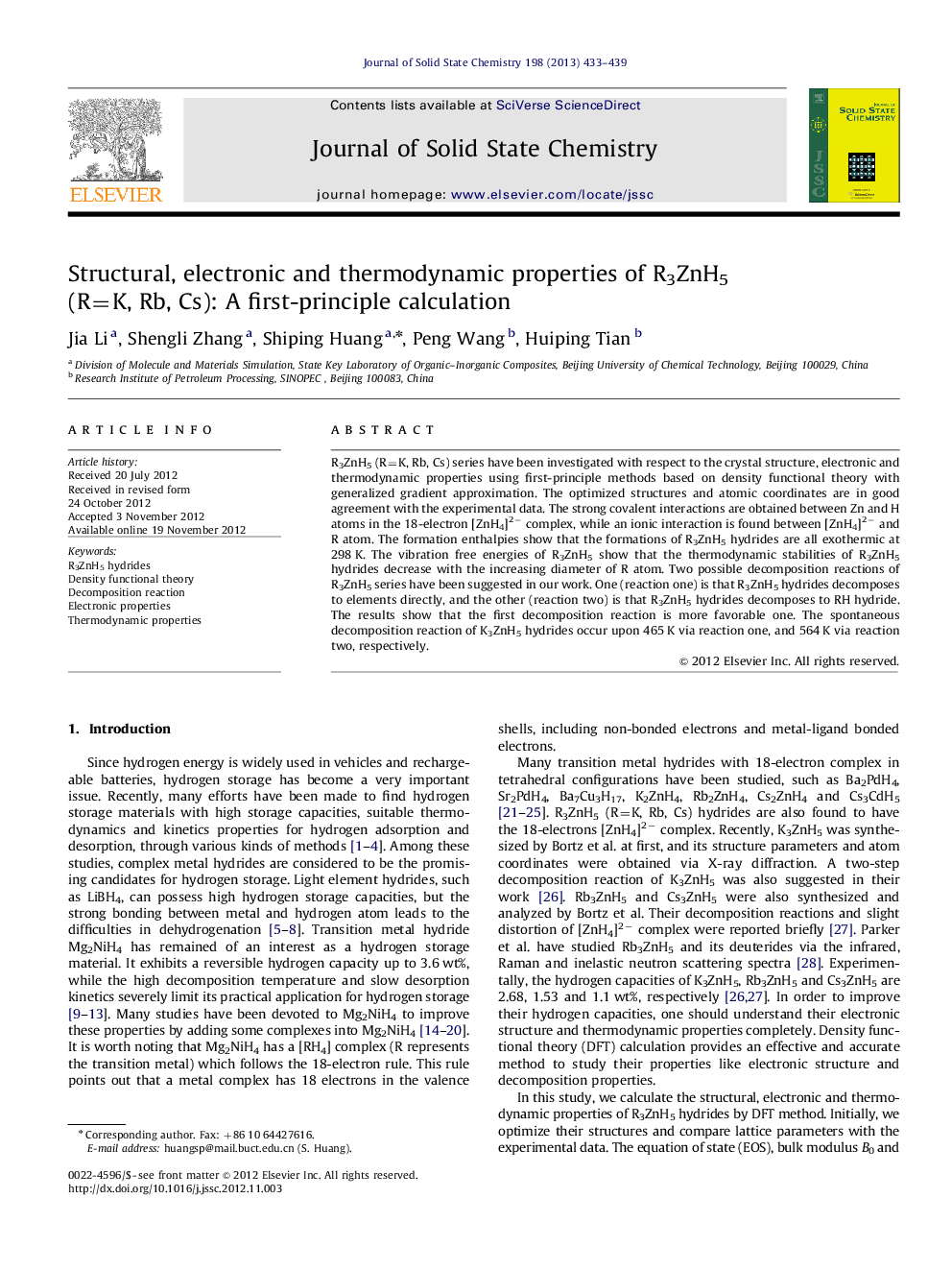| Article ID | Journal | Published Year | Pages | File Type |
|---|---|---|---|---|
| 1331413 | Journal of Solid State Chemistry | 2013 | 7 Pages |
R3ZnH5 (R=K, Rb, Cs) series have been investigated with respect to the crystal structure, electronic and thermodynamic properties using first-principle methods based on density functional theory with generalized gradient approximation. The optimized structures and atomic coordinates are in good agreement with the experimental data. The strong covalent interactions are obtained between Zn and H atoms in the 18-electron [ZnH4]2− complex, while an ionic interaction is found between [ZnH4]2− and R atom. The formation enthalpies show that the formations of R3ZnH5 hydrides are all exothermic at 298 K. The vibration free energies of R3ZnH5 show that the thermodynamic stabilities of R3ZnH5 hydrides decrease with the increasing diameter of R atom. Two possible decomposition reactions of R3ZnH5 series have been suggested in our work. One (reaction one) is that R3ZnH5 hydrides decomposes to elements directly, and the other (reaction two) is that R3ZnH5 hydrides decomposes to RH hydride. The results show that the first decomposition reaction is more favorable one. The spontaneous decomposition reaction of K3ZnH5 hydrides occur upon 465 K via reaction one, and 564 K via reaction two, respectively.
Graphical abstractTotal charge density of K3ZnH5.Figure optionsDownload full-size imageDownload as PowerPoint slideHighlights► Electronic and thermodynamic properties of R3ZnH5 (R=K, Rb, Cs) were calculated. ► The formations of R3ZnH5 hydrides are all exothermic at 298 K. ► The thermodynamic stabilities decrease with the increasing diameter of R atom. ► Two possible decomposition pathways of R3ZnH5 were investigated.
